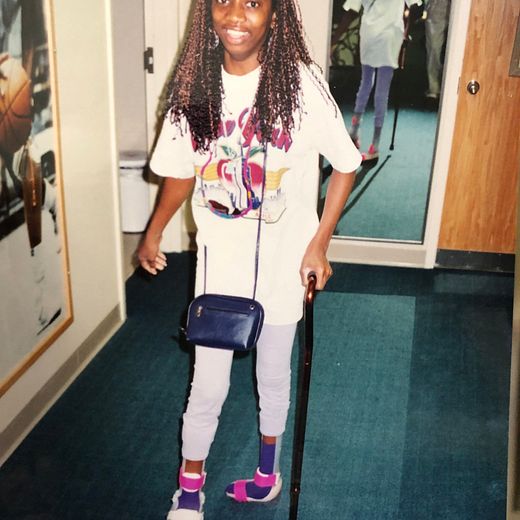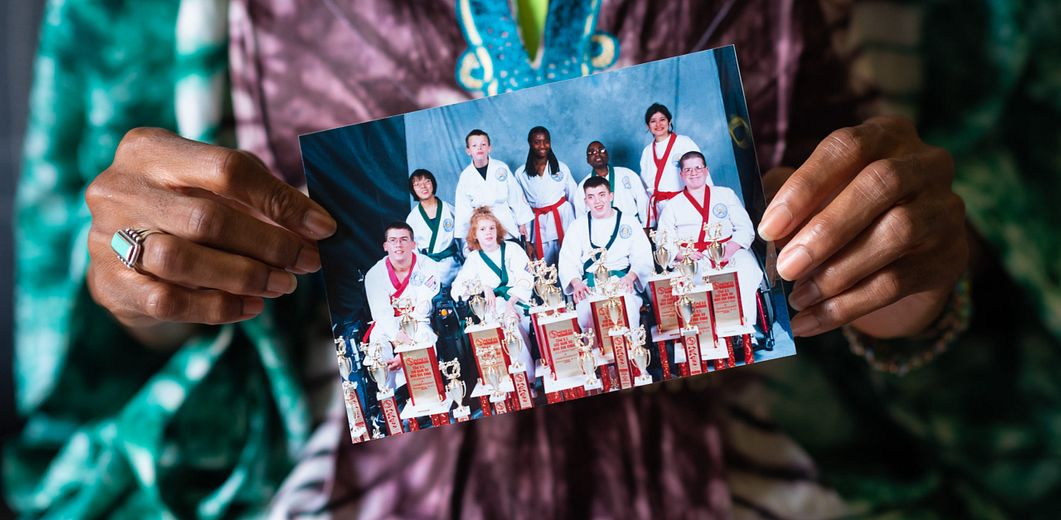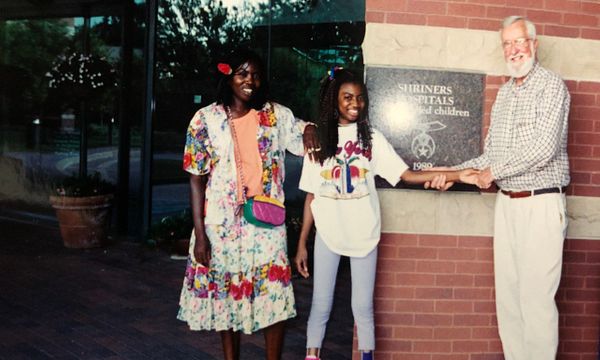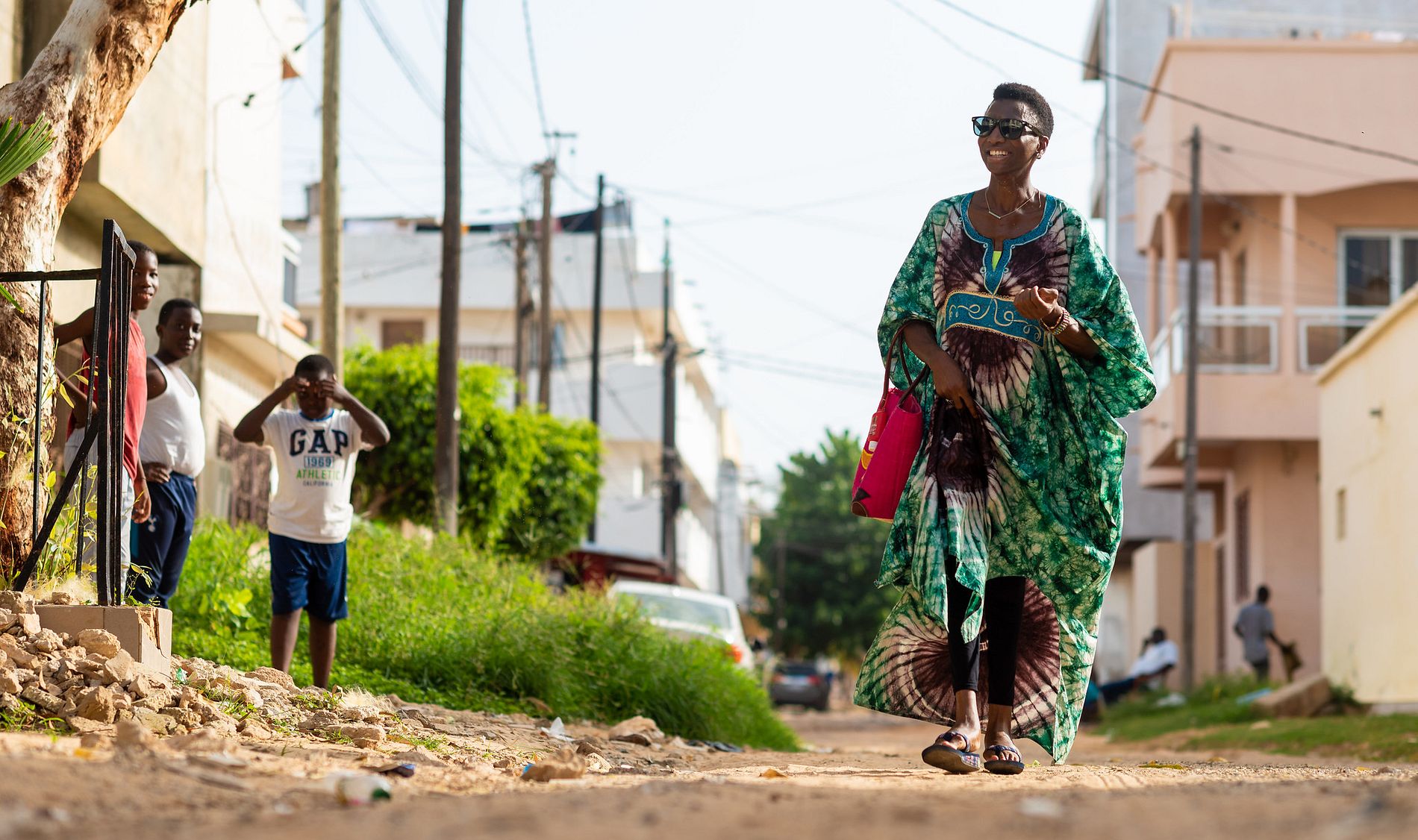A World Apart: A Global Clubfoot Journey Fuelled by One Woman’s Resolve
This blog was published on https://www.miraclefeet.org/stories/a-world-apart-a-global-clubfoot-journey-fueled-by-one-womans-resolve
Doctors told Aisha Mballo’s parents it was “God’s will” that she was born with clubfoot, and their attempts to find treatment all ended the same way: no answers.
“My parents were told to give up hope, basically,” said Aisha. “It’s sad to think that I wasn’t going to be able to walk, and even if I did, I would not have a long healthy life.”
Although Aisha’s deformity was severe, she was able to hook her feet through thong sandals (which she had to replace every two weeks) and move around and even attend school.

“I knew early on that for me to get any help with my feet it would have to be outside of Senegal.” “My parents educated me and treated me just like my other siblings,” said Aisha. “But I noticed that there were no other children who had clubfeet, or any other form of disability in my school.”
Aisha was a devoted student. Even at a young age she had an innate drive to prove—to herself and others—that she could achieve anything, do anything—despite her condition. Although she wasn’t allowed to play sports, she would watch from the sidelines knowing that one day her feet would no longer hold her back.
One day when Aisha was 14 everything changed. An American NGO called Child Fund visited her school to recruit children in need of financial support. Knowing that this chance may not come again, Aisha adamantly convinced the NGO representatives to find a sponsor for the medical care she needed.
A few months later, a nurse living in Minnesota saw Aisha’s picture in the NGO newsletter and decided to help. She traveled to Senegal to meet Aisha and her family and to make arrangements to bring Aisha to the US for treatment.
Aisha’s parents, knowing how badly Aisha wanted treatment, told her, “We support you no matter what” and agreed to let her go. “At that moment I became an adult,” recalls Aisha.


“It hurt them so much to see me the way I was and there was nothing they could do. When the opportunity presented itself, their support was the best they could offer.” In December of 1996, Aisha departed Dakar for Minneapolis with her host mother. When they stepped off the plane at their connecting airport, JFK, it was freezing cold, and the ground was covered in snow. Aisha’s host mother had packed warm clothes for her, but her feet, still in flip flops, were numb with cold.
Her host mother immediately called her husband and asked him to go buy thick fabric to make a booty to protect Aisha’s feet from the cold. Looking back, Aisha laughs at her first impression of the US—a place she was sure would be the answer to everything she’d longed for—but a place that looked, in the middle of winter, completely dead.
Two days after arriving in Minnesota, Aisha went to the hospital for a consultation and to set a course of treatment—a plan that ended up taking nearly three years and requiring seven surgeries. As the doctors were preparing Aisha for her first surgery, they detected a Mitral valve regurgitation in her heart.
“That had to be addressed immediately. I couldn’t undergo any surgery or anesthesia unless the mitral valve was taken care of first.” So, instead of operating on her foot, Aisha was scheduled for open heart surgery. Aisha’s host parents contacted her mom and dad in Senegal to tell them the news and arranged for Aisha’s mom to fly to the US to be with her.

“There are so many people who need help. I am one of the lucky ones.”
Finally, after a successful recovery from heart surgery, the orthopedic doctors could proceed with the planned treatment for Aisha’s feet. They began with castings to manipulate the position of her feet and to loosen the tendons. Over a dozen casts and leg braces later, they performed the first operation on both feet. After the surgery, which left her with thigh-high casts on both legs, Aisha began experiencing real pain. Post-surgery, she was in a wheelchair for six weeks unable to bear any weight on her legs. Slowly, she transitioned to crutches and bearing incrementally more weight on her feet.
Aisha stayed in touch with her family in Senegal as much as possible using pre-paid calling cards to ring her parents every two weeks, and she sent letters and pictures to show how much progress she was making in treatment.
The whole time, she was also attending high school at Park Center Senior High learning not only the 10th grade curriculum, but also English. She had taken two years of English in Senegal but wasn’t yet fluent. Fortunately, her high school offered English as a Second Language (ESL) classes which helped Aisha maintain top grades.
Aisha’s focus on her studies and her medical care were her main priority. “It’s like I had tunnel vision. What helped me survive high school was the fact that I did not see anything around me. I was so focused on school—classroom, teachers, my lessons—and then I’m on to therapy and treatment.”

She did get picked on, but Aisha was used to standing up for herself. “People will tease you and think of you as weak, so in the states when I started noticing those signs, I approached it the Senegalese way which was confront them and make an appointment to ‘fight under the mango tree,’” she explains, only half joking. “I wanted to demonstrate to the kids that I am not to be picked on—I’m here for something—and if they have questions, they can ask.”
Instead of a fight, there was a meeting with both sets of parents and kids in the principal’s office. “I was a complete stranger to them,” concedes Aisha. “They were seeing a grownup with feet they have never seen or heard of. There were lots of questions.”
“I did not want sympathy. I’m always watchful of people being extra nice or trying to do me favors just because of the way my feet were.”
“After that, everyone wanted to be my friend,” she laughs. “I mean, I rolled around school in an electric scooter.”
Aisha has always been wary of sympathy, not wanting to draw attention to her condition as a source of shame or as something to be pitied. She’s aware of how fortunate she is to have a supportive family who didn’t try to hide or stigmatize her, but she’s also aware that had she not found the resolve within herself to seek out the care she knew she deserved, then today she would have a completely different life.
After 2.5 years of casting, surgery, wearing leg braces over the summer, followed by more casting and more surgeries, Aisha, her host parents, and her medical team came to an agreement that the projected treatment goal for Aisha to walk Plantar grade, or flat foot position, had been met, and in fact, the result was better than expected. Her right foot was almost completely repositioned, and although her left foot proved more challenging because the tendon was tighter, it was vastly improved.
“I want that for every African child who has clubfoot. No matter where you live or where you are born – you should be able to find care.” While she was in the U.S., she earned a black belt in Karate. Aisha continues her 12-year martial arts practice every morning in the living room of her Dakar apartment. While figuring out what her next chapter holds, she is taking time to return to her home, rejoin her family, and reconnect with her culture. It’s a homecoming, but also a new beginning.
“In the US, when I looked in the mirror, I saw a kid with clubfoot,” said Aisha. “Now, I see me.”
Aisha wants to help children and families in Senegal find the care that she had to travel around the world to find. Looking back, clubfoot has impacted Aisha’s life in ways she never could have predicted. It’s shaped the person she is today. It brought her a second family. And it saved her life.
“There are so many people who need help. I’m one of the lucky ones.”
